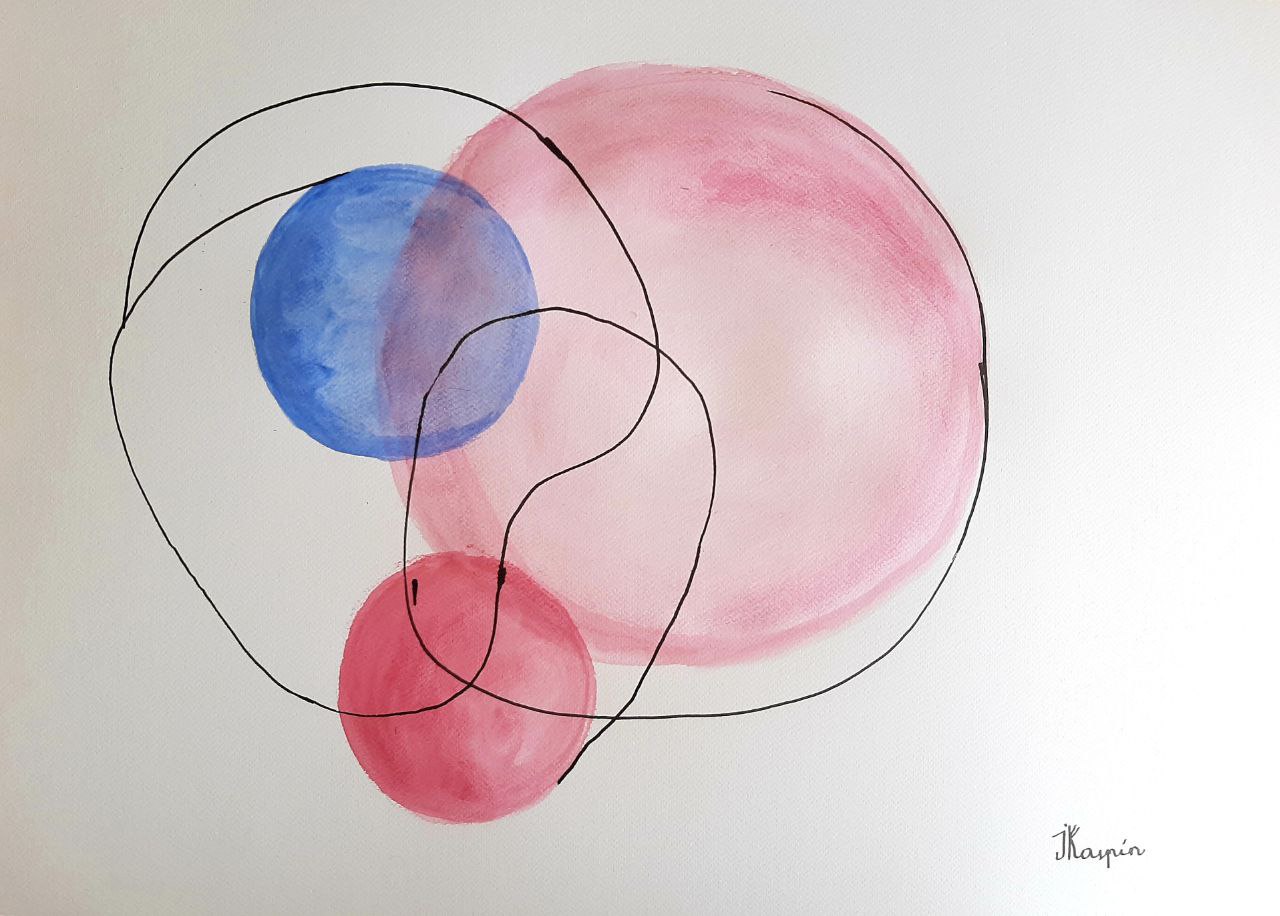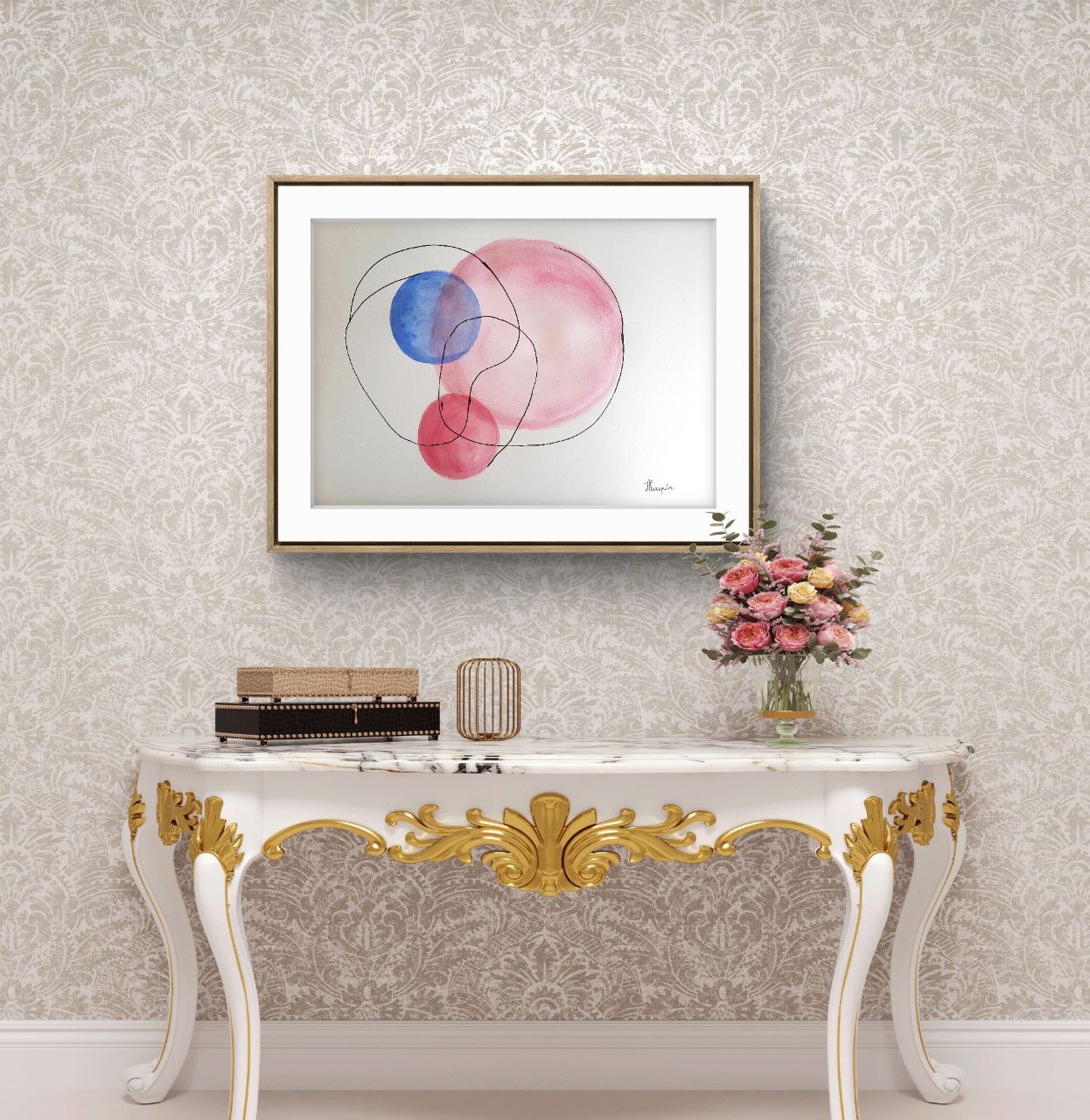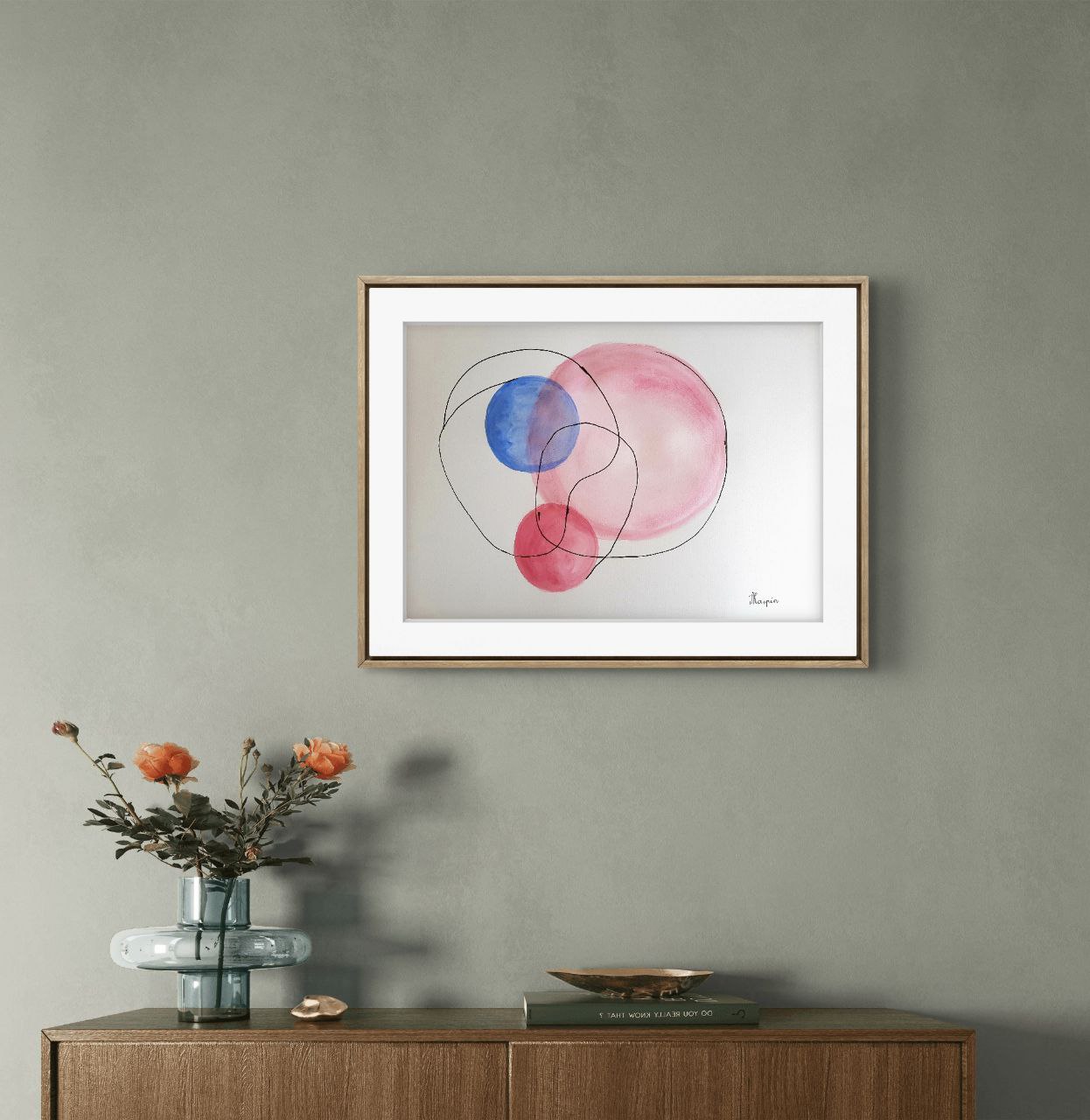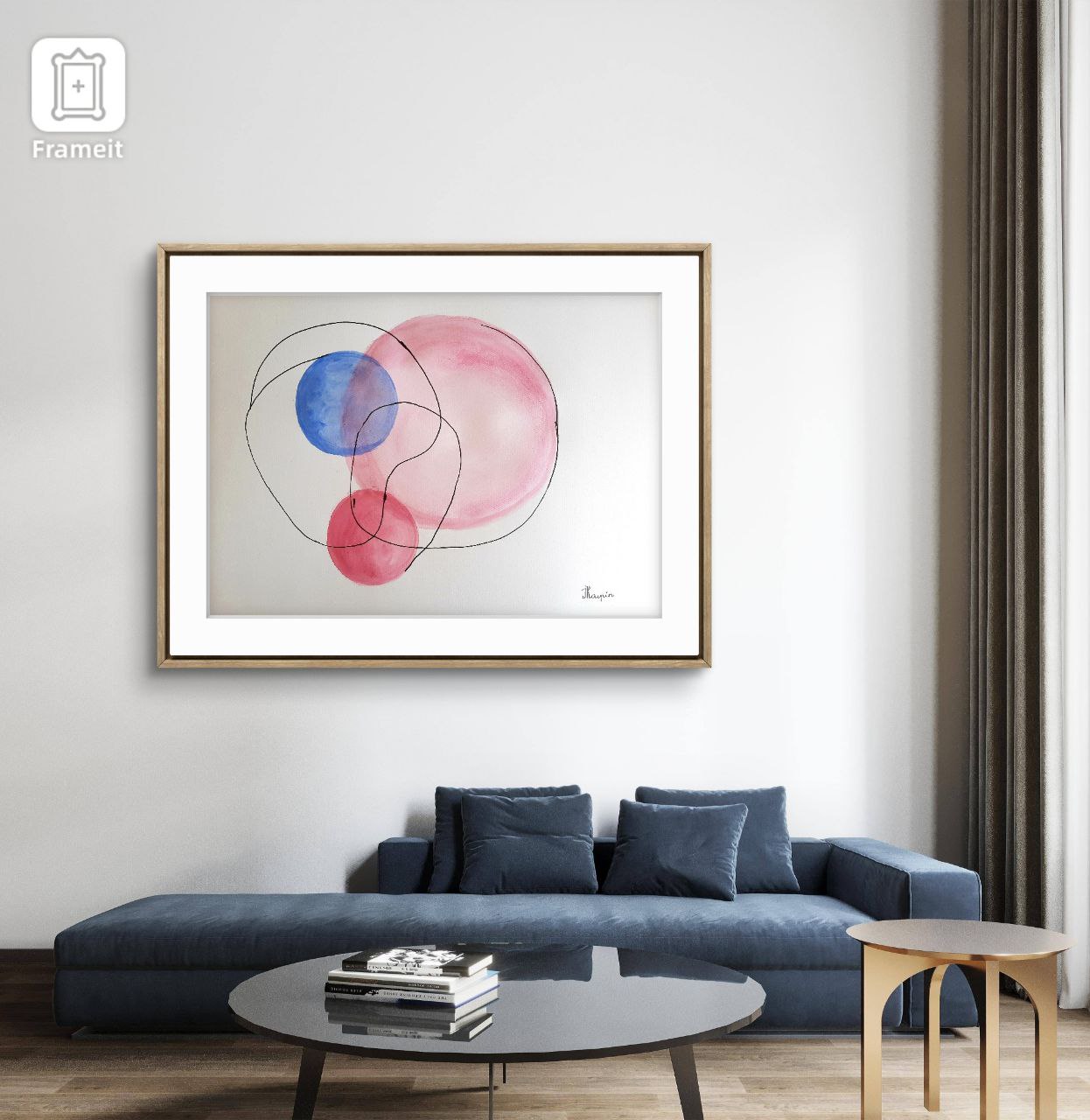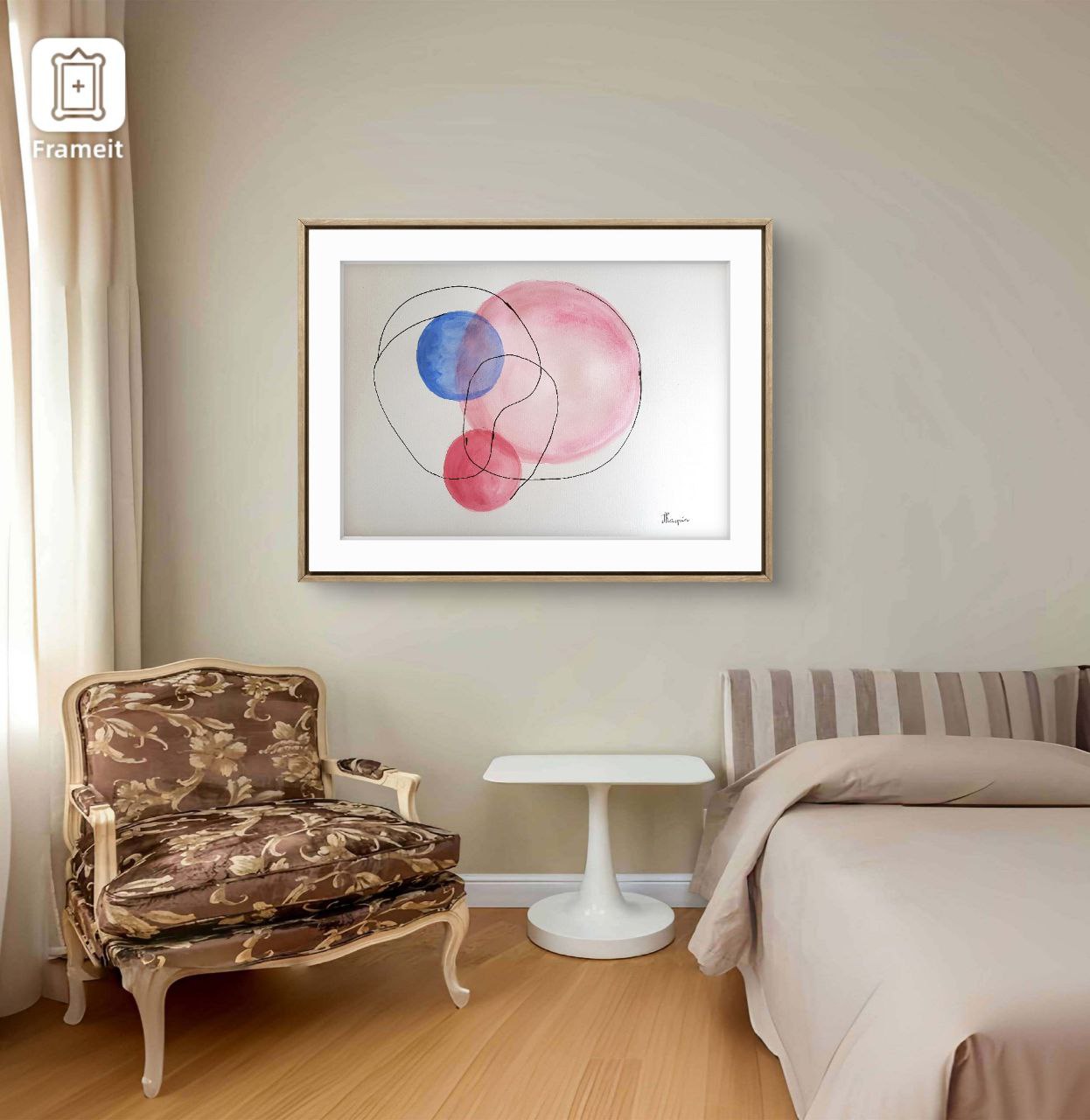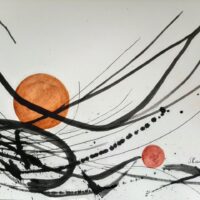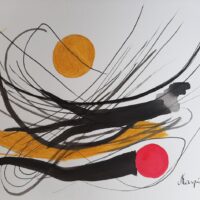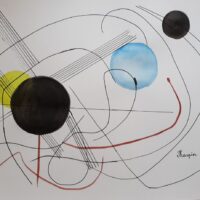First, I lay down a breath of pale pink — almost like mist, as if I were painting a heartbeat… yours, maybe. Or mine, waiting.
Then comes a deeper pink, closer to desire. It moves like a whisper, gently reaching, trying to touch. A soft blue appears next, quiet and light, like a thought you keep to yourself — cool and tender, almost shy. And then… I let the ink speak. The line follows no plan, only emotion. It circles the shapes, like a hand that finally dares to reach.
Each stroke is a path, each color, a feeling. It’s an intimate meeting between chance and the heart, between what I feel and what I’m still afraid to say. Chemins intimes there was a silence, full of soft things like petals on a morning without sound. we were bubbles, layers of feeling suspended between gentle sky and warm breath. your gaze made flowers grow in the hidden folds of my movements. i was no longer afraid of the emptiness— you filled it with a single smile. everything trembled inside: a thread of ink between us, where chance becomes a caress, where light traces our most intimate paths. and if happiness had a shape, perhaps it would look like this: a fragile balance between the blue of the soul and the rose of the heart.
********************
Intimate Paths
An artwork by Jacques Kaspin
At first glance, « Intimate Paths » unfolds like a visual meditation on the fragility of connection and the quiet resonance of emotion. Artist Jacques Kaspin composes a work where each gesture feels both restrained and deeply intentional, using minimal materials — watercolor and ink — to create a composition rich in poetic tension. The large pale pink circle, laid down first, expands like an aura: it is a breath, an open silence, an inner chamber. More than a backdrop, it becomes a mental space, almost corporeal, where feeling begins to awaken. The deeper pink follows — closer to desire — approaching gently, engaging in a tender dialogue. Then comes a soft blue: discreet, suspended, like a fleeting thought. It balances, soothes, and watches over the whole. But it is the appearance of the black ink line — thin, irregular, and instinctive — that shifts the work. It does not divide but connects. It meanders, embraces, brushes against the forms without enclosing them.
The line is breath, is thread — like a whispered phrase between two souls. It transforms the image into a sensitive cartography, mapping the quiet spaces between emotions, between gestures, between beings. Kaspin does not paint a subject; he evokes a state. His work is not to be explained, but felt.
« Intimate Paths »
invites listening — to the silence within, to blurred memories, to unspoken longing.
There is a rare softness here, an assumed vulnerability, and above all, a capacity to express the unseen: what exists between two pulses, two colors, two shared silences. With a few subtle marks, Jacques Kaspin creates a piece of profound emotional density. It is silent poetry, offered to those who know how to see beyond the visible.
****************************
Chemins intimes
Une œuvre de Jacques Kaspin
Dès le premier regard, « Chemins intimes » s’impose comme une méditation visuelle sur la fragilité du lien et la résonance des émotions.
L’artiste, Jacques Kaspin, compose ici une œuvre où chaque geste semble retenu, mesuré, mais profondément chargé de sens. L’économie des moyens — aquarelle et encre — contraste avec la richesse poétique qui en émane.
Le grand cercle rose pâle, posé en premier, s’étend comme une aura : c’est un souffle, un silence ouvert, une chambre intérieure. Il ne s’agit pas d’un simple fond, mais d’un espace mental, presque charnel, où l’on sent déjà l’éveil d’un sentiment.
Le rose plus soutenu vient ensuite, frôlant l’intimité du désir ; il s’approche, il dialogue avec le premier.
Puis surgit un bleu léger — présence discrète, presque une pensée suspendue. Il équilibre, il calme, il veille.
Mais c’est l’arrivée de la ligne noire, fine et irrégulière, qui opère un basculement.
Tracée à l’encre avec une apparente spontanéité, elle ne délimite pas, elle relie. Elle serpente, enlace, caresse les formes sans jamais les enfermer.
Elle est souffle, elle est fil — comme un murmure entre deux êtres.
Elle transforme la composition en une cartographie sensible, celle des émotions partagées, des hésitations, des élans.
Kaspin ne peint pas un sujet ; il évoque un état. Son œuvre n’est pas à comprendre, mais à ressentir.
« Chemins intimes »
invite à l’écoute : celle du silence intérieur, des souvenirs flous, des élans qu’on n’ose nommer.
Il y a ici une forme de douceur rare, une pudeur assumée, et surtout cette capacité à traduire l’invisible — ce qui se passe entre deux âmes, entre deux gestes, entre deux couleurs.
En quelques traces, Jacques Kaspin parvient à faire naître une œuvre d’une profonde densité émotionnelle. C’est une poésie silencieuse, offerte à qui saura regarder au-delà du visible.
***********************

